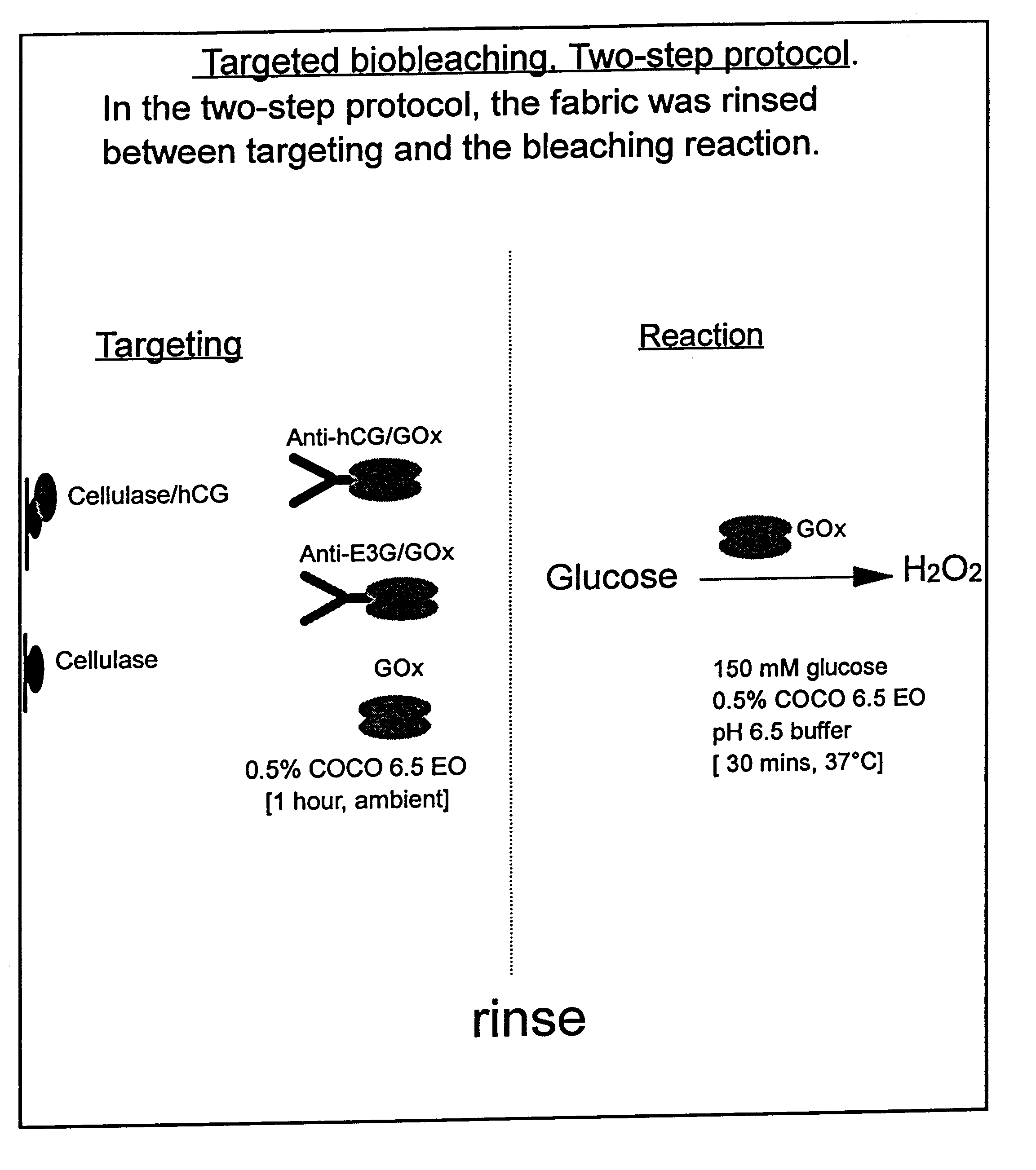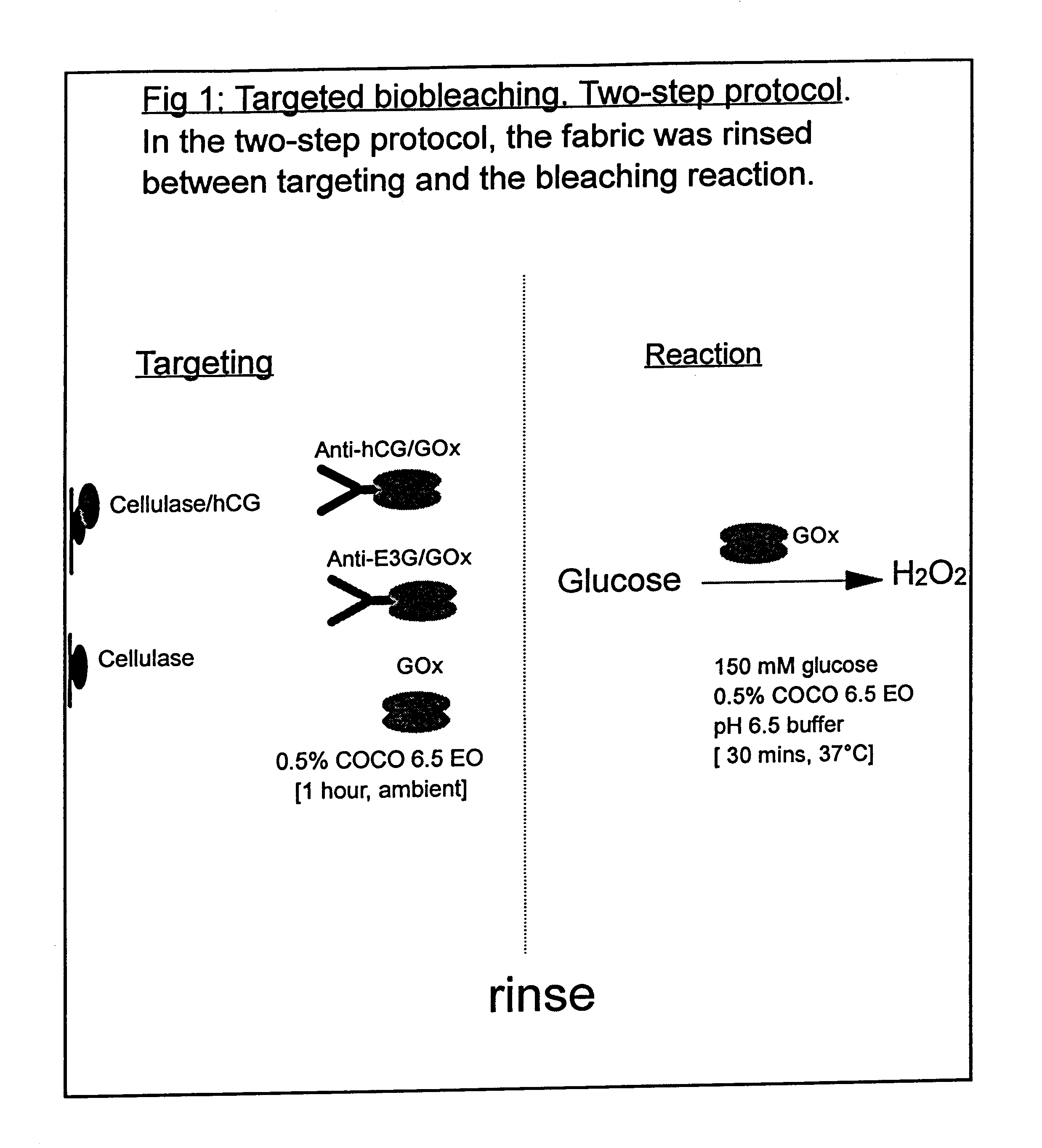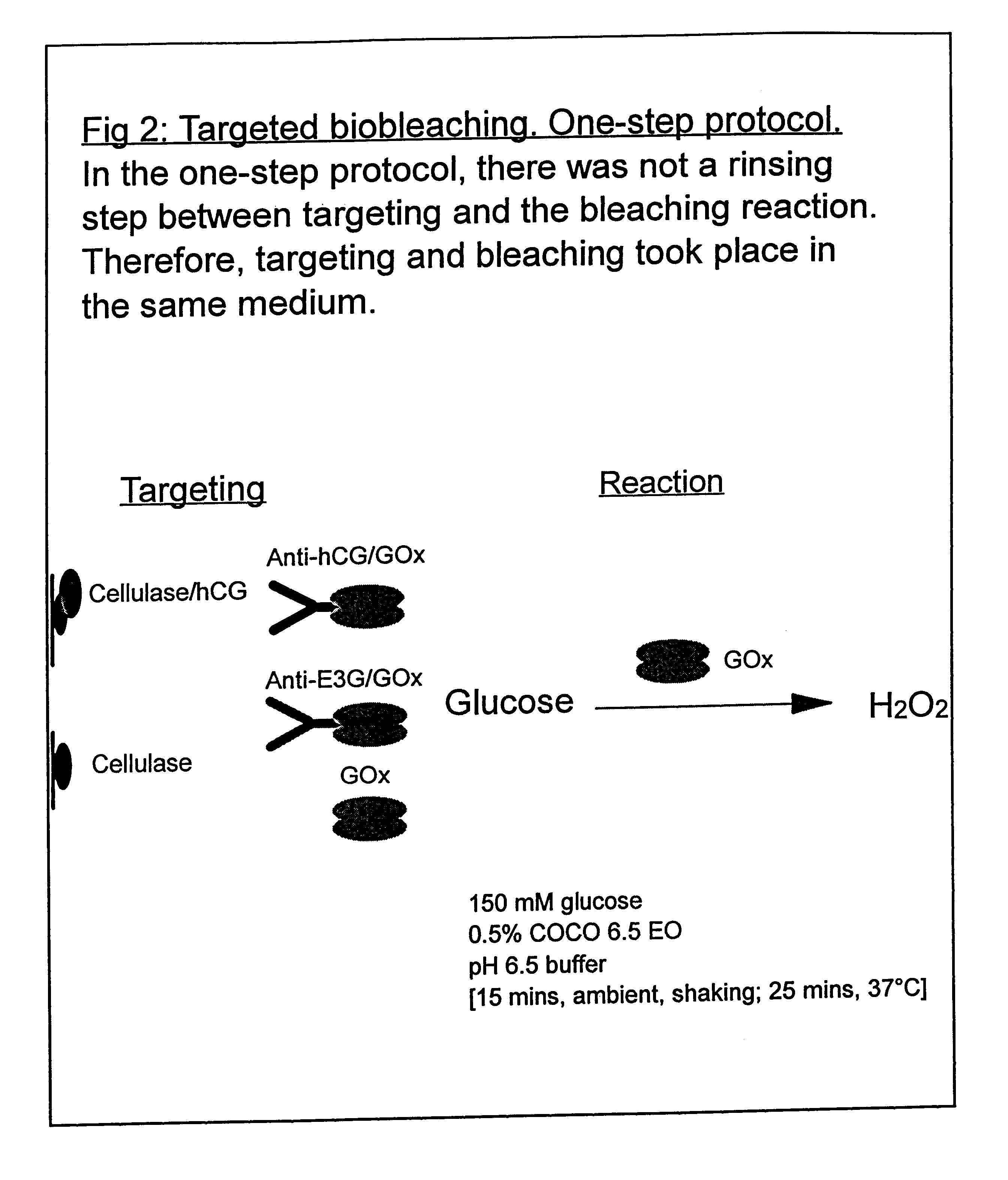Bleaching enzymes
a technology of bleaching enzymes and enzymes, which is applied in the direction of detergent compounding agents, halogen oxides/oxyacids, other chemical processes, etc., can solve the problems of garment damage, significant amount of bleaching, and negative effects on garment colours
- Summary
- Abstract
- Description
- Claims
- Application Information
AI Technical Summary
Benefits of technology
Problems solved by technology
Method used
Image
Examples
example 1
Use of a Scaled-down Model to Illustrate the Benefits of Targeted Bio-bleaching
The following examples 1-5 comprise a scaled-down model system in which a red wine stain on cotton fabric was labelled with a protein antigen for which an antibody is already available. The antibody was covalently coupled to glucose oxidase enzyme using standard procedures, to form an antibody / oxidase conjugate. This conjugate was then applied to the (labelled) wine stain in the presence of glucose. The glucose oxidase enzyme generated H.sub.2 O.sub.2 close to the surface of the stain and bleached it. The amount of bleaching was compared with that obtained with the same amount of unconjugated (and therefore untargeted) glucose oxidase. It was also compared with the bleaching obtained by the same amount of glucose oxidase conjugated to a non-specific antibody that did not bind to the protein label. It was also found that particularly good targeting effects could be achieved if the conjugate and glucose wer...
example 2
Labelling Stains with Protein Antigen
White cotton fabric was stained with red wine (Cotes du Rhone, Co-op) and dried in a 37.degree. C. incubator. Stained fabric was cut into 1 cm squares and then labelled with a protein antigen, human chorionic gonadotropin (hCG). This was done by applying hCG in the form of a cellulase / hCG conjugate (cellulase binds to cotton fabric). The conjugate was prepared by methods that are well known in the art (see for example "Bioconjugate Techniques" by Greg T. Hermanson, Academic Press (1996)).
Cellulase ex. Trichoderma reesei, (Sigma Product number C 8546) was derivatised with N-succinimidyl 3-(2-pyridyldithio) propionate, propionate, "SPDP", (Sigma). hCG (Sigma Product number C 5297) was derivatised with S-acetylmercaptosuccinic anhydride, "SAMSA" (Sigma). The two derivatised proteins were then reacted together in pH 6.5 buffer to yield a covalently-coupled conjugate.
The stained fabric squares were labelled with hCG by incubating them in a solution of...
example 3
Preparation of Antibody / Glucose Oxidase Conjugates
Antibody / glucose oxidase conjugates were also prepared by the SAMSA / SPDP method. Antibody was derivatised with SAMSA and glucose oxidase was derivatised with SPDP. The two derivatised proteins were then reacted together in pH 6.5 buffer to yield a covalently-coupled conjugate. Two different antibodies were used: one that had a specificity for hCG, "anti-hCG antibody", and one that did not have a specificity for hCG, "anti-E3G antibody".
PUM
| Property | Measurement | Unit |
|---|---|---|
| chemical equilibrium constant Kd | aaaaa | aaaaa |
| chemical equilibrium constant Kd | aaaaa | aaaaa |
| wash temperatures | aaaaa | aaaaa |
Abstract
Description
Claims
Application Information
 Login to View More
Login to View More - R&D
- Intellectual Property
- Life Sciences
- Materials
- Tech Scout
- Unparalleled Data Quality
- Higher Quality Content
- 60% Fewer Hallucinations
Browse by: Latest US Patents, China's latest patents, Technical Efficacy Thesaurus, Application Domain, Technology Topic, Popular Technical Reports.
© 2025 PatSnap. All rights reserved.Legal|Privacy policy|Modern Slavery Act Transparency Statement|Sitemap|About US| Contact US: help@patsnap.com



